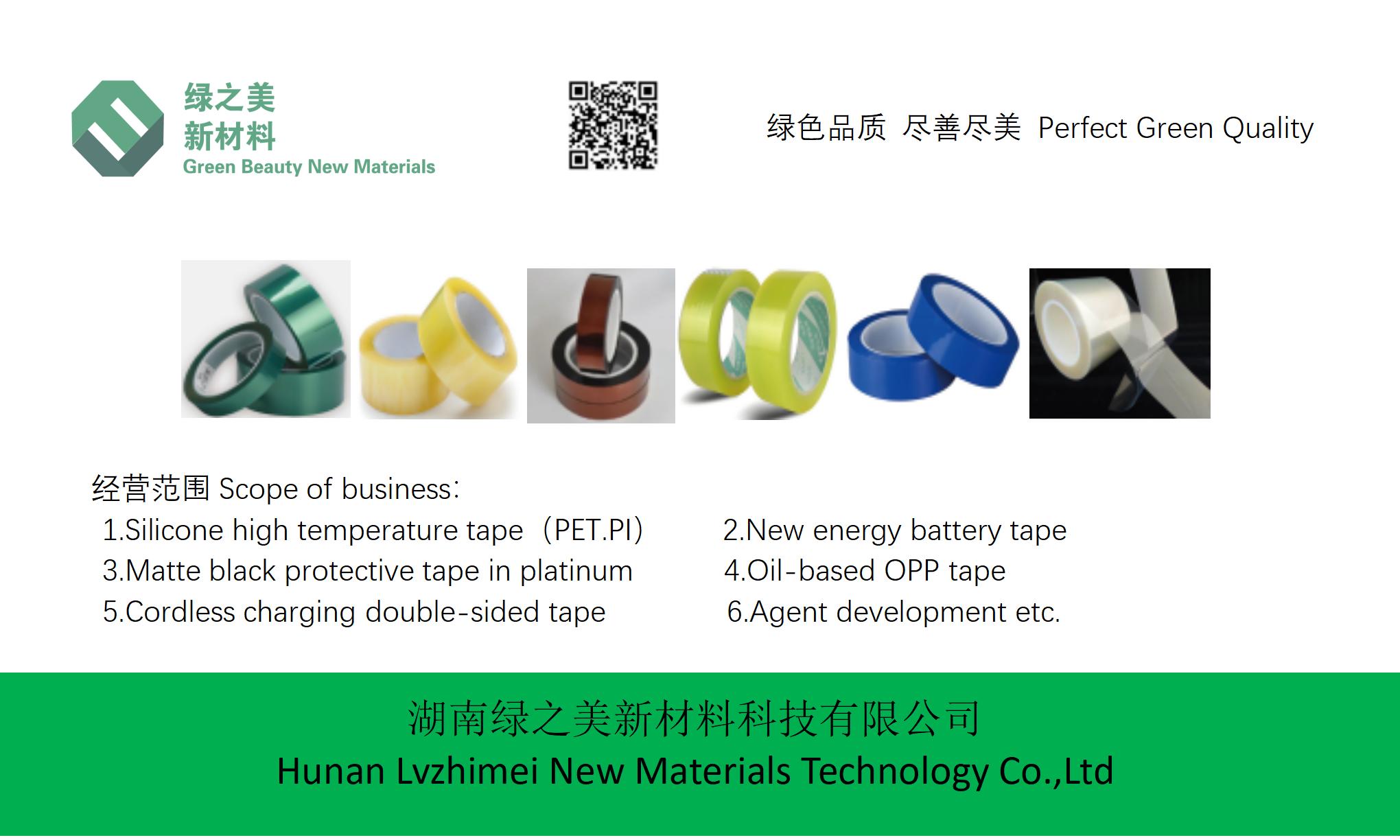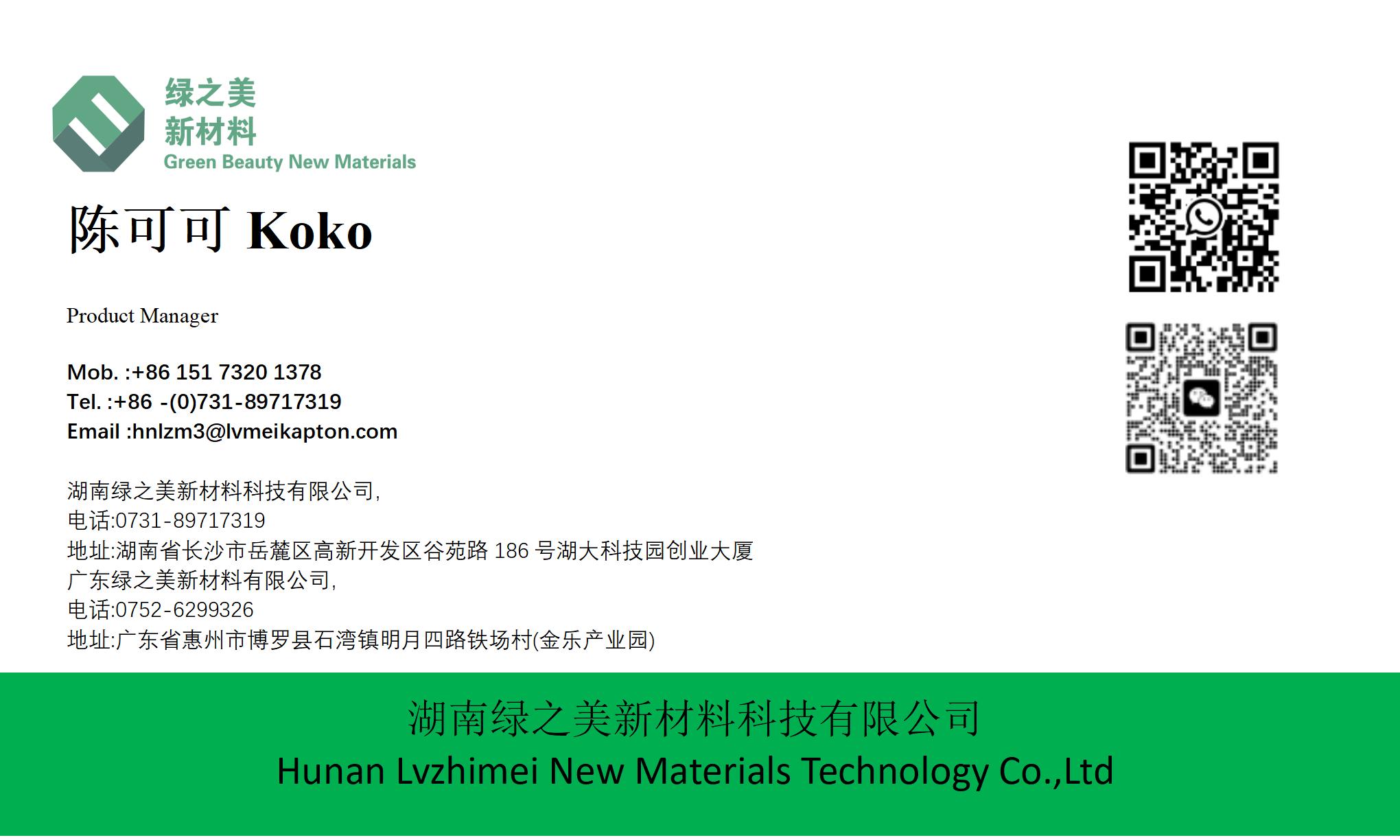hnlzm@lvmeikapton.com
+86 13787123465


Hunan Lvzhimei New Material Technology Co., Ltd.


NameDescriptionContent
Why Is Gold Finger Electronics Polyimide Tape Kapton the Future of High-Frequency Electronics? |https://www.lvmeikapton.com/
Source:
|
Author:Koko Chan
|
Published time: 2025-04-17
|
70 Views
|
Share:
As the demand for high-speed data transmission and advanced communication technologies escalates, the need for materials capable of supporting high-frequency electronics becomes increasingly critical. Gold Finger Electronics Polyimide Tape Kapton, a cutting-edge material, has emerged as a pivotal solution for applications ranging from 6G antennas to aerospace systems. This article delves into the technical advantages of Kapton, comparing it with Adhesive PET high-temperature tape and highlighting its role in shaping the future of high-frequency electronics.
Technical Superiority: Key Attributes of Kapton
1. Exceptional Dielectric PerformanceKapton's low dielectric constant (Dk) and dissipation factor (Df) are its defining strengths. At 60 GHz, Kapton exhibits an astonishing insertion loss of 0.08 dB, significantly lower than Adhesive PET tape's 1.2 dB loss at the same frequency. This superior performance ensures minimal signal attenuation, enabling efficient transmission of high-frequency signals essential for 6G, millimeter-wave radar, and satellite communications.
Table 1: Comparison of Dielectric Properties at 60 GHz
Material | Insertion Loss (dB) | Dk @ 10 GHz | Df @ 10 GHz |
Kapton | 0.08 | 3.4 | 0.002 |
Adhesive PET Tape | 1.2 | 3.8 | 0.03 |
Kapton's stability across frequencies (Dk variation < ±0.1) and temperatures (-55°C to +300°C) ensures consistent performance in diverse environments. In contrast, PET materials suffer thermal degradation above 150°C, compromising reliability in high-power applications.
2. Thermal and Chemical ResistanceKapton's polyimide structure provides unparalleled thermal stability, maintaining mechanical integrity even under prolonged exposure to extreme temperatures. This resilience, coupled with its resistance to solvents, acids, and radiation, makes it ideal for aerospace, automotive, and military electronics. PET tapes, while offering some thermal resistance, degrade rapidly when subjected to temperatures exceeding 200°C, limiting their application scope.
3. Mechanical Strength and FlexibilityKapton's inherent flexibility (bend radius < 0.5 mm) and tensile strength (≥200 MPa) allow it to withstand repeated flexing without signal degradation—a critical factor in flexible electronics and conformal antenna designs. PET tapes, though mechanically robust, often exhibit brittleness at high frequencies, compromising performance.
Enabling 6G and Beyond: Applications Driving Kapton Adoption
1. 6G Antenna SystemsThe shift to 6G networks (operating in the 30-300 GHz range) demands materials with ultra-low signal loss. Kapton's performance at 60 GHz aligns perfectly with these requirements, enabling the development of high-gain phased-array antennas and multi-beam communication systems. Its low-profile, lightweight nature facilitates integration into wearable devices and IoT infrastructure.
2. Millimeter-Wave Radar and SatcomAutonomous vehicles and aerospace systems rely on millimeter-wave radar for precise sensing. Kapton's durability and high-frequency transparency ensure stable operation in adverse weather conditions. For example, SpaceX's Starlink satellites utilize Kapton-based components to maintain signal integrity during long-duration space missions.
3. High-Power ElectronicsIn power electronics (e.g., DC-DC converters), Kapton's thermal conductivity (0.3 W/mK) and electrical isolation properties prevent thermal runaway, enhancing system reliability. PET tapes, lacking such thermal management capabilities, are unsuitable for high-power applications.
Comparative Analysis: Advantages Over PET and Other Materials
1. Performance vs. PETWhile PET tapes offer cost advantages for low-frequency applications, their drawbacks become pronounced at high frequencies:
●
Signal Loss: Kapton's 0.08 dB loss vs. PET's 1.2 dB at 60 GHz translates to ~15x higher signal efficiency.
●
Temperature Limitations: PET's thermal degradation above 150°C restricts its use in high-temperature environments (e.g., automotive electronics).
●
Flexibility: PET's brittleness limits its use in flexible circuits, while Kapton excels in this domain.
2. Comparison with PTFE and LCP
●
PTFE (Teflon): Though excellent in dielectric properties, PTFE's high cost and poor mechanical strength make it less practical. Kapton offers a cost-effective balance between performance and manufacturability.
●
LCP (Liquid Crystal Polymer): While LCP has good high-frequency performance, its limited temperature range (max. 260°C) and moisture sensitivity are drawbacks compared to Kapton.
Future Prospects: Driving Technological Advancements
1. Integration with AI and IoTKapton's role in enabling high-speed data links will accelerate the growth of AI-driven applications, such as real-time analytics and edge computing. Its compatibility with flexible electronics paves the way for innovative wearables and smart textiles.
2. Advancements in ManufacturingRecent developments in laser micromachining and nanostructuring techniques are enhancing Kapton's performance further. For example, nano-patterned Kapton substrates can achieve even lower insertion losses, opening doors for terahertz applications.
3. Sustainability and Cost ReductionAs green manufacturing processes evolve, Kapton's production costs are expected to decrease without compromising quality. This will democratize its adoption across industries, from consumer electronics to renewable energy systems.
Conclusion
Gold Finger Electronics Polyimide Tape Kapton is revolutionizing high-frequency electronics through its unparalleled combination of low signal loss, thermal stability, and mechanical robustness. As 6G networks, autonomous systems, and space exploration technologies evolve, Kapton's role will become increasingly pivotal. Its ability to bridge the gap between performance and practicality makes it the cornerstone of the next generation of high-speed communication and beyond.



Hunan Lvzhimei New Material Technology Co., Ltd.
Quick Links
Product Categories
© 2024 Hunan Lvzhimei New Material Technology Co., Ltd.All Rights Reserved. Designed by Erge
0731 - 89717319
hnlzm@lvmeikapton.com
+86 13787123465
Room 502, Chuangye Building, No186, Guyuan Road, High-Tech District, Changsha, Hunan, China
CONTACT



